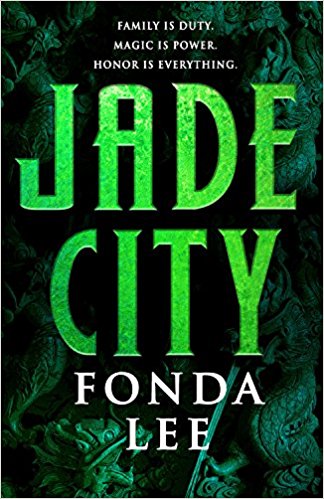 Jade City (The Green Bone Saga, #1) by Fonda Lee
Jade City (The Green Bone Saga, #1) by Fonda Lee Format: audiobook, eARC
Source: purchased from Audible, supplied by publisher via NetGalley
Formats available: hardcover, paperback, ebook, audiobook
Genres: science fiction, urban fantasy
Series: Green Bone Saga #1
Pages: 498
Published by Orbit on November 7, 2017
Purchasing Info: Author's Website, Publisher's Website, Amazon, Barnes & Noble, Kobo, Bookshop.org
Goodreads
Magical jade—mined, traded, stolen, and killed for—is the lifeblood of the island of Kekon. For centuries, honorable Green Bone warriors like the Kaul family have used it to enhance their abilities and defend the island from foreign invasion.
Now the war is over and a new generation of Kauls vies for control of Kekon's bustling capital city. They care about nothing but protecting their own, cornering the jade market, and defending the districts under their protection. Ancient tradition has little place in this rapidly changing nation.
When a powerful new drug emerges that lets anyone—even foreigners—wield jade, the simmering tension between the Kauls and the rival Ayt family erupts into open violence. The outcome of this clan war will determine the fate of all Green Bones—from their grandest patriarch to the lowliest motorcycle runner on the streets—and of Kekon itself.
Jade City begins an epic tale of family, honor, and those who live and die by the ancient laws of jade and blood.
My Review:
The story begins with an act of violence and an act of mercy. And it ends when the consequences of those acts come full circle.
It also feels like the result of one of the strangest mashups ever. It’s as if urban fantasy and The Godfather had a book baby, midwifed by the Shogun phenomenon of the late 1970s. And yes, I know just how strange that sounds.
Jade City reads like an urban fantasy. It has that noir-ish feel that seems part and parcel of that genre. And yet, the magic in this story, the magic that is enabled by the wearing of bioenergetic jade, is actually science rather than the type of magic that usually powers urban fantasy. Likewise, the ability to use or tolerate jade – or be immune to it – is also science-based, and can be manufactured through the use of drugs, also created by science.
So the Green Bone Saga is one of those rare series that walks like a duck and quacks like a duck, but is not a duck. It feels like urban fantasy and reads like urban fantasy – but it’s actually science fiction. Sorta/kinda.
I called The Godfather the book’s second parent, because this isn’t a story about good vs. evil, as fantasy so often is. Instead, this is a story about warring criminal organizations that are also clans. The two clans, the Mountain and No Peak (and I’m kind of ashamed at how long it took for me to get that pun) control the city of Janloon and the country of Kekon. The clans don’t govern, but they definitely control. As the saying goes in Kekon, gold and jade don’t mix.
It seems as if every single person in Kekon is part of one clan or another. And certainly the clans control all economic life in the country. The “Fists” and “Fingers”, under the control of the “Horn”, are the enforcers and, if need be, warriors. They protect the clan and its interests. The “Luckbringers” and “Lantern Men”, under the aegis of the “Weather Man”, run the clan’s businesses. Every business in Janloon pays tribute to one clan or the other. It’s not merely “protection money” the way it is in other criminal organizations. That tribute goes into the clan’s coffers, and goes out again whenever a member of the clan, including those Luckbringers and Lantern Men, needs help or a favor.
The clans seem to serve as both family and protective association. It’s a complicated system, but it also works. (Even though some of the titles use the words “man” or “men” not all Lantern Men, not all Weather Men, and not all the Fists and Fingers are actually men. There are several key female players in this drama, and more as the series continues.)
The clans also control the mining of that bioenergetic jade, the country’s major source of wealth – and the biggest bone of contention between the two clans as well as the reason that the major powers that surround Kekon eye the country like hungry scavengers looking for vulnerable prey.
Which Kekon has been in the recent past and has no desire to be in the foreseeable future.
And that’s where our story begins. Not that it seems that way at first. At first, what we see is two young idiots trying to steal jade from a drunken old Fist of the No Peak clan, and their punishment by the Horn of No Peak, Kaul Hilo, and his older brother, the Pillar and leader of the clan, Kaul Lan.
Events spiral out from that seemingly minor incident that expose the weakness of No Peak, the insidious strength of their enemies in the Mountain, the deception of the No Peak Weather Man and the rot at the heart of their family.
In the end, honor is only temporarily served. But it exacts a high price just the same.
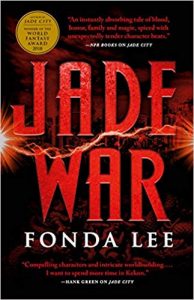 Escape Rating A+: Jade City was a book that didn’t let go of me, and I didn’t let go of it, either. I was listening to this one – and the audio is marvelous – but I couldn’t listen fast enough and eventually switched to the book. Which I finished in one binge-read of an afternoon/evening. Then I immediately started on the second book, Jade War, which is just as fantastic and just as hard to let go of.
Escape Rating A+: Jade City was a book that didn’t let go of me, and I didn’t let go of it, either. I was listening to this one – and the audio is marvelous – but I couldn’t listen fast enough and eventually switched to the book. Which I finished in one binge-read of an afternoon/evening. Then I immediately started on the second book, Jade War, which is just as fantastic and just as hard to let go of.
An observation that at first may seem like an aside – listening to the audiobook means that you have no idea how anything is spelled, while reading the text means that you have no idea how anything is pronounced.
That’s relevant to Jade City because of that third book parent or influence I listed above, the book Shogun by James Clavell and the TV mini-series that it spawned. While Janloon and Kekon are not Japan, they are not Japan in the same way that so many of the classics of epic fantasy are not set in the United Kingdom or Europe. The Shire is not rural England, but it is intended to have that feel. Epic fantasy in particular is rife with examples where the map was influenced by Western Europe as are the cultures and mores of the fantasy kingdoms without being exact analogs. (Although sometimes they are, particularly in the works of Guy Gavriel Kay and Jacqueline Carey).
Janloon and Kekon are both inspired and influenced by the history and culture of Japan and the author’s own heritage in ways that fascinate the reader and add to the depth of the story. The Green Bone Saga isn’t just a good story, it’s an immersive experience and I’ve loved every minute of it.
At the same time, both Shogun and The Godfather were also products of the 1970s. (The Godfather was published in 1969 and Shogun in 1975). The setting of this story, not just Janloon itself but the levels of technology that the reader sees and hears about from the rest of Kekon and the world, are meant to feel like the 1970s, with TVs and cars and records and pay telephones and many other things that were part of life in the 1970s but that have changed immeasurably since.
(It may be difficult to imagine now, but at the time Shogun was originally broadcast, it was at the height of the mini-series boom and was an excellent example of its kind. Also, it (loosely) portrayed a period of Japanese history when the country pursued an extremely isolationist foreign policy – if that’s not a contradiction in terms. There is resonance between the fictional history of Kekon and the real history of Japan in that Kekon is coming out of a period of isolationism and is dealing with the results of that change in policy – among other changes – during the story.)
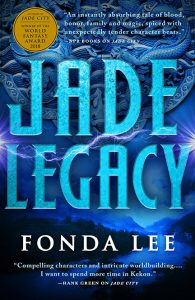 The Green Bone Saga, at least so far, is not a battle between good and evil. While the series is definitely epic in scope, it is not epic fantasy in that sense. The readers follow one side of this clan war, and we’re meant to empathize with the Kaul family – and we do. That doesn’t mean that they are “good” in the way that epic fantasy defines its heroes.
The Green Bone Saga, at least so far, is not a battle between good and evil. While the series is definitely epic in scope, it is not epic fantasy in that sense. The readers follow one side of this clan war, and we’re meant to empathize with the Kaul family – and we do. That doesn’t mean that they are “good” in the way that epic fantasy defines its heroes.
But they are, every single one of them, absolutely fascinating to watch. I’m in the middle of Jade War, the second book of this series, right now – and loving every minute of it. My only regret about the whole thing is that the final book in the series, Jade Legacy, does not yet have a projected publication date. It’s going to be a long wait to see how the Kaul family – and Kekon – survive the mess they are now in.










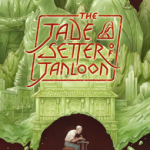
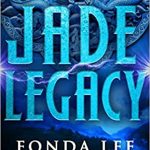
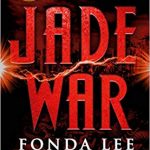
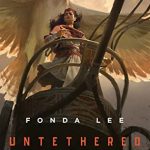






Wow, that sounds like a real mashup. Not sure how I would feel about that, reading it…
Liz @ Bent Bookworm recently posted..Magnetic by Anya J. Cosgrove